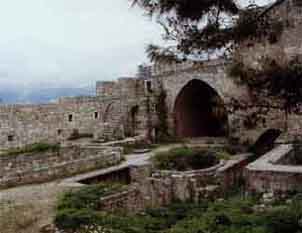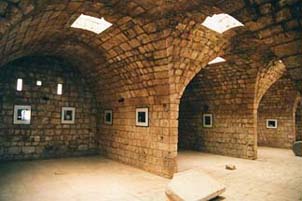|
Tripoli, Capital of North Lebanon
The ancient city of Tripoli is located in Northern
Lebanon. It was founded by the Phoenicians in 800 BC and was named Athar, during
the Persian era it became the center of Sidon, Tyre and Arados Island
confederation, where Phoenicians met to debate their important affairs, thus
became known as Tripoli or "the three cities". The city holds the Fortress of
Saint Gilles (Sinjil), built early 12th BC. The castle was remodeled by the
Mamluks and Ottomans later.
Several Muslim monuments such as the Great Mosque and the Mosque of Taynal
(built using elements from ancient and Crusader monuments) are still preserved
in Tripoli. It also has khans (caravansary), souks (bazaars), and the famous Assiba Tower which was built by Mamluks in the 15th BC.
Tripoli has 45 buildings registered as historical sites, many of them date from
the 14th century.
 |
|
Latin Tripolis, Arabic Tarabulus, in full Tarabulus
Ash-sham (“The Eastern Tripoli”), the city lies 85 kilometres north of
Beirut and has a special character all its own. Thanks to its historical
wealth, relaxed lifestyle and thriving business climate, this is a city
where modern and medieval blend easily into a lively and hospitable
metropolis.
|
Habitation of the site of Tripoli goes back to at
least the 14th century BC, but it wasn't until about the 9th century BC that the
Phoenicians established a small trading station there.
Under the successors of Alexander the Great during
the Hellenistic period, Tripoli was used as a naval shipyard. There is also
evidence that it enjoyed a period of autonomy at the end of Seleucid era.
Under Roman rule, starting with the take-over of the
area by Pompey in 64-63 BC, the city flourished. During this period the Romans
built several monuments in the city. Earthquake and tidal wave destroyed the
Byzantine city of Tripoli in 551.
After 635 Tripoli became a commercial and
shipbuilding centre under the Omayyads. It achieved semi-independence under the
Fatimid Dynasty when it developed into a centre of learning.
At the beginning of the 12th century, the Crusaders
lays siege to the city, finally entering it in 1109.
 |
|
In 1268 the castle and the
Crusaders burg were occupied and destroyed by Baibars. In 1289 was the
fall of Crusader Tripoli (harbour city or El-Mina) to Sultan al-Mansur
Qalaw. In the year of 1612 flood destroyed Mamluk monuments. In
1623 Fakhr-ed-Din attacked the forces of Pasha of Tripoli at Anjar;
Tripoli fell to Fakhr-ed-Din, (Sultan al-Barr or Sultan of the Land).
|
Long disputed by rival Syrian princes, it was
occupied by the Egyptians under Ibrahim Pasha in the 1830’s and was taken by the
British in World War I. It was incorporated into the State of Greater Lebanon
(Grand Liban) in 1920.
During World War II, the British and Free French
occupied the city and in 1946 it became part of the independent Republic of
Lebanon. Principally Muslim, it was a centre of insurrection against the
Christian-dominated central government in 1958 and again in 1975–76. In 1982–83
Tripoli was briefly a headquarters of the Palestine Liberation Organization
(PLO). Syrian soldiers occupied the city from 1985. The city's economy, which
was gravely disrupted by the civil war from 1975, began to recover from the late
1980’s.
Tripoli has become Lebanon's second city. It is a
major port, a commercial and industrial centre, and a popular beach resort. The
city serves as an important oil storage and refining centre. Other industries
include the manufacture of soap and cotton goods, sponge fishing, and the
processing of tobacco and fruits. A coastal railway, which was closed in the
mid-1970’s because of the civil war, links the city with Beirut. more>>
Information From the Ministry of
Tourism
 |